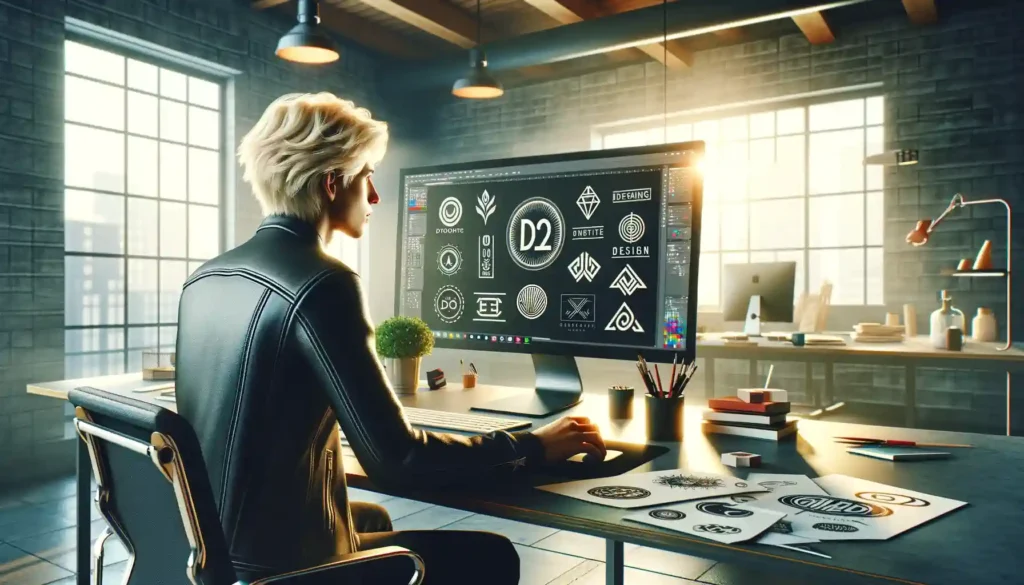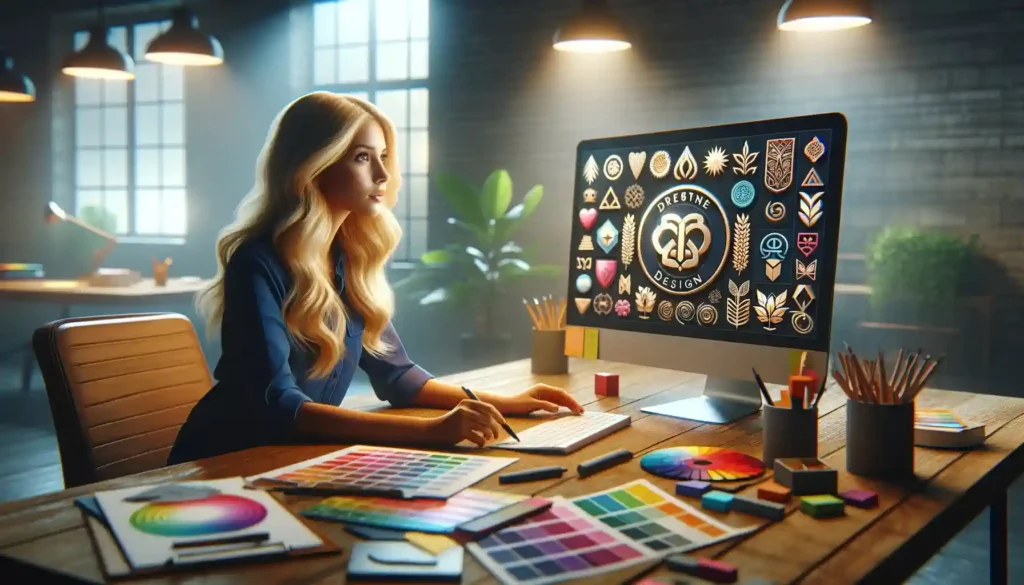Why Motion Design is Key to Building a Strong Brand Identity? I know, I know—branding already feels like a circus act, right? You’ve got logos, fonts, colors, taglines… and now we’re throwing in motion? What’s next, a juggling routine? Well, spoiler alert: motion design isn’t just some fancy extra; it’s the secret sauce that can take your brand from “meh” to “memorable.” Let’s talk about why motion design is absolutely key to building a strong brand identity.
1. Static Is So Last Century
Remember when brands were just a logo and a color palette? Yeah, that’s like saying you can still play Snake on your Nokia 3310. Today, we’re living in a world where attention spans are shorter than a goldfish’s memory. If your brand isn’t moving, it’s basically standing still in the eyes of your audience. Motion design breathes life into your branding—because who wants a boring, static logo when it could move? When your brand moves, it catches eyes, engages, and keeps people from scrolling past you faster than a TikTok dance challenge.

2. Emotion Through Motion
Well, let me tell you: motion design is like the tiny violin in the background of a tear-jerking movie scene. It’s subtle but it pulls the heartstrings. Think about it—when your logo smoothly animates onto the screen or your brand’s visual elements gently float into place, it’s creating an emotional connection. That soft whoosh or clean transition gives your audience a sense of ease, excitement, or even trust. Motion can make your brand feel human, and in today’s world, human brands win hearts.
3. Memorability Is the Name of the Game
Here’s a fact: brands that stick in your mind tend to move. Whether it’s a logo that spins into place, a product animation that shows you exactly how it works, or a little bouncing ball that highlights key points—motion makes your brand memorable. Why? Because we humans are wired to remember things that catch our attention in dynamic ways. You want your brand to live rent-free in people’s heads, right? Well, motion is the key to unlocking that mental space.
4. Telling a Story Without Saying a Word
Look, we’ve all heard that branding is storytelling. But here’s the kicker: your brand story doesn’t have to be an epic novel. It can be told in a few seconds of animation. Motion design lets you visually communicate what your brand is all about—whether it’s through the way your logo animates or how elements interact on your website. You can tell the world you’re playful, serious, innovative, or traditional without saying a word. When done right, your audience knows who you are before you’ve even introduced yourself.
5. Consistency is King (And Motion Helps)
Let’s talk about consistency. Your brand needs to be like a good cup of coffee—reliable, strong, and delivering the same experience every time. Motion design helps solidify that consistency across all touchpoints. Whether it’s a website animation, a social media bumper, or a video intro, motion gives you the ability to create a cohesive experience. When your animations all follow the same style and rhythm, it creates brand unity. And unified brands? Well, they tend to dominate their industries. Just sayin’.
6. The Edge in a Noisy World
We’re living in a digital jungle, folks. Every brand is fighting for the same eyeballs. You know what that means? You need an edge. And motion design? That’s your machete, cutting through the noise. If you’re not moving, someone else is—probably right past you. Think of your brand motion like the difference between a billboard and a video ad. One’s just sitting there, hoping you’ll notice. The other one’s in your face, engaging, impossible to ignore. Motion is how you stand out in the digital crowd.
7. Building Trust, One Smooth Animation at a Time
Here’s a curveball: motion design can build trust. I know, sounds weird, right? But hear me out. A brand that invests in clean, polished motion shows it cares about every little detail. That kind of precision speaks volumes to your audience. They see that your brand is meticulous, professional, and serious about delivering quality. Trust me, if your logo enters the screen like a smooth operator, people will assume your services or products are just as sleek.
8. Visual Hierarchy—Motion Does That Too!
You ever gone to a website and had no idea where to look first? Motion design solves that! By using animation, you can guide your audience’s eyes exactly where you want them to go. It’s like being the director of your own little movie, starring your brand. Whether you want them to notice a call-to-action, a special offer, or your latest product, motion creates a visual path. It’s not just about making things look cool; it’s about controlling the flow of attention.
9. Enhancing the User Experience
If you want people to interact with your brand, you’ve got to make it an experience. And motion design? That’s what makes interactions fun. Whether it’s a button that animates when hovered over, a loading screen that doesn’t make you want to pull your hair out, or subtle transitions that guide you through a website—motion is what makes the user experience smooth and enjoyable. And let’s be real: happy users are returning users.
10. Because Your Competitors Are Already Doing It
Yep, I went there. If you’re not using motion design to strengthen your brand identity, you can bet your competitors are. You don’t want to be the one brand stuck in 2010 while everyone else is zooming into the future, right? Motion design has become a standard in modern branding, and if you’re not keeping up, well, you’re falling behind. So, why not leap ahead and let your brand move with the times?
And there you have it, folks! Motion design isn’t just some flashy gimmick. It’s a powerful tool that builds stronger, more memorable, and more engaging brands. So, the next time you’re thinking about your brand identity, remember—static logos are out, and moving brands are in. Get your brand dancing, and watch it waltz right into the hearts (and minds) of your audience! Key Brand Design Elements For Good Business Branding is not just about a memorable logo; it encompasses a variety of elements that work together to create a cohesive and impactful identity for your business.
10 Must-Have Motion Design Features for Effective Branding
Good branding can set you apart from competitors, build trust with your audience, and communicate your company’s values and personality. Below, we explore six key brand design elements that are crucial for effective branding.
1. Logo Design
The cornerstone of your brand’s visual identity, a logo, serves as the face of your company. It’s often the first thing people will notice about your brand, making it critical to invest in a design that is not only eye-catching but also encapsulates your brand’s essence. A good logo should be:
Simple: Easy to recognize and remember.
Versatile: Adaptable to various mediums and applications.
Relevant: Reflective of your brand’s industry, mission, and values.
2. Color Palette
Colors play a pivotal role in branding by evoking emotions and conveying messages without words. The right color palette can enhance brand recognition and influence perceptions. When choosing colors for your brand, consider:
- Psychology: Understand the emotions and behaviors different colors can induce.
- Differentiation: Select colors that set you apart from competitors.
- Consistency: Use your color palette consistently across all brand materials.
3. Typography
The fonts you choose for your brand materials speak volumes about your personality and values. Typography should be legible and reflect your brand’s character, whether it’s professional, creative, or playful. Key considerations include:
Consistency: Stick to a limited set of fonts for coherence.
Legibility: Ensure your text is easy to read across different sizes and mediums.
Alignment: Typography should align with your brand’s tone and message.
4. Imagery
Photographs, illustrations, and other visual elements can significantly enhance your brand’s storytelling. Consistent and high-quality imagery helps to build a narrative that resonates with your audience. When selecting imagery, ensure it is:
Relevant: Images should be appropriate for your brand and audience.
Consistent: Maintain a consistent style and quality across all images.
Evocative: Choose imagery that evokes the desired emotional response.
5. Brand Voice
Your brand voice is how you communicate with your audience through written and spoken words. It’s a reflection of your brand’s personality and should be consistent across all channels. A distinctive brand voice can be:
Personable: Speak in a way that resonates with your target audience.
Clear: Communicate your message effectively and avoid jargon.
Consistent: Maintain the same tone and style in all communications.
6. Brand Messaging
At the heart of your branding is your message: what you stand for and what sets you apart from the competition. Your brand messaging includes your value proposition, mission statement, and the stories you tell. Effective brand messaging is:
Clear: Easily understood by your audience.
Concise: Communicate your value proposition succinctly.
Compelling: Engages and motivates your audience to take action.
Conclusion
Effective branding requires a strategic approach to each of these key design elements. By ensuring your logo, color palette, typography, imagery, brand voice, and messaging are harmoniously aligned, you can create a strong brand identity that resonates with your audience and supports your business goals. Remember, good branding is not static; it evolves with your business and market. Regularly revisit and refine your brand elements to ensure they continue to communicate your brand’s value and uniqueness effectively.



